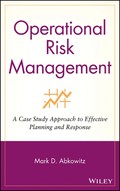Victoria’s largest OHS conference and trade show has ended. The shadow of the impending harmonisation of OHS laws hung over both events. The OHS message throughout the conference was one of nothing to worry about. WorkSafe’s Ian Forsythe felt that Victoria was well-placed for minimal disruption as the OHS laws in that State had been thoroughly reviewed by Chris Maxwell QC in 2003. Forsythe described the current OHS review as “Maxwell on steroids”, a good line for the conference audience but one that reflects the, often, smug approach of many Victorians to the harmonisation process, an approach not shared elsewhere as shown by a front-page article in The Australian on 9 April 2011.
The Business Council of Australia is concerned about the different interpretations of the laws by each of the states. This has been a possibility from the very start of the reform process because the focus was always harmonisation, not uniformity. Continue reading “Dis-harmonisation over OHS laws”



